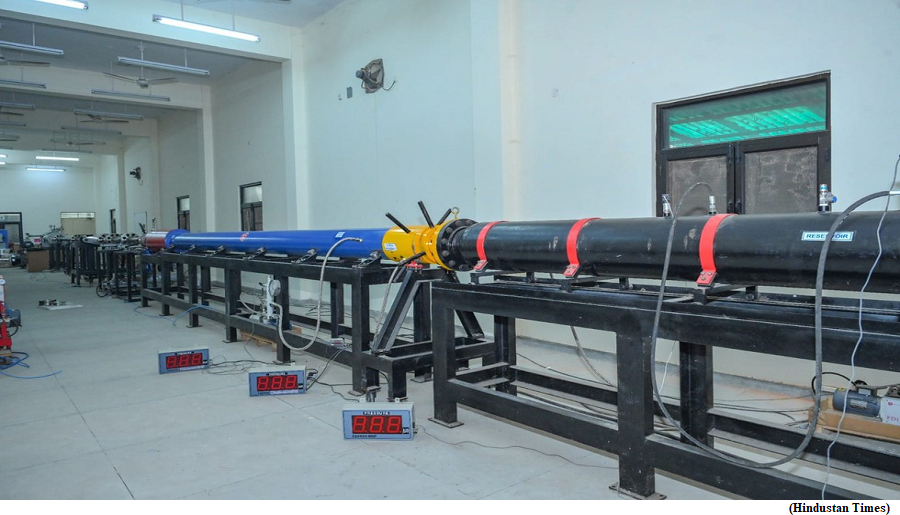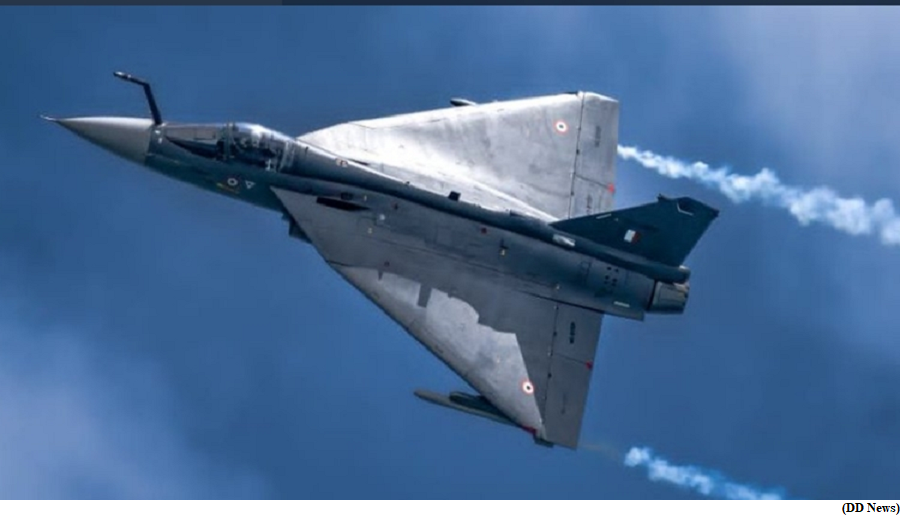Hypervelocity facility at IIT Kanpur (GS Paper 3, Science and Technology)

Why in news?
- Recently, the Indian Institute of Technology Kanpur (IIT-K) has successfully established and tested the nation's first Hypervelocity Expansion Tunnel Test Facility, known as S2.
- This state-of-the-art facility propels India into an elite group of countries possessing advanced hypersonic testing capabilities.
- Hypersonic speed refers to speeds that are significantly faster than the speed of sound, typically defined as speeds exceeding Mach 5. Mach 5 is five times the speed of sound, which is approximately 343 meters per second.
What has IIT-Kanpur done?
- The S2 facility, affectionately nicknamed 'Jigarthanda', spans 24 meters in length and is housed within IIT Kanpur’s Hypersonic Experimental Aerodynamics Laboratory (HEAL) at the Department of Aerospace Engineering.
- It was indigenously designed and developed over three years with the support of the Aeronautical Research and Development Board (ARDB), the Department of Science and Technology (DST), and IIT Kanpur itself.
- S2 is capable of generating flight speeds ranging from 3 to 10 kilometers per second, effectively simulating the extreme hypersonic conditions that vehicles encounter during atmospheric entry, asteroid entry, scramjet flights, and ballistic missile launches.
What will it be used for?
- This unique first-of-its-kind facility is expected to be an invaluable asset for ongoing missions by the Indian Space Research Organisation (ISRO) and the Defence Research and Development Organisation (DRDO), including the Gaganyaan mission, Reusable Launch Vehicles (RLV), and hypersonic cruise missiles.
- Hypersonic missiles are one of the most difficult weaponery to be intercepted. Their extremely high speed gives them a unique advantage of evading radars at times. Two types of hypersonic missiles have been developed over the years: hypersonic cruise missiles and hypersonic glide vehicles.
- The new facility is expected to boost India's testing capabilities. In 2020, the DRDO had tested the hypersonic air-breathing scramjet system for propulsion, which attained a speed of Mach 6 for 23 seconds during the testing.
Way Forward:
- With this indigenous hypervelocity testing capability, India is poised to make significant strides in developing cutting-edge hypersonic technologies and systems, bolstering its position in global aerospace research and defense readiness.
IAF’s Vayu Shakti 2024
(GS Paper 3, Defence)
Why in news?
- The Indian Air Force (IAF) is set to hold ‘Exercise Vayu Shakti-24’ at Pokhran’s Air to Ground Range, near Jaisalmer, on 17 February with several firsts planned for demonstration.
- The exercise seeks to “showcase the full spectrum of operations” that the IAF can undertake “in a realistic scenario”.

Details:
- The last edition of Vayu Shakti was held on 16 February 2019.
- The aim of the exercise is not only to practice and showcase the equipment or capability of the crew, but also to showcase the ability to undertake swift operations that involve coordination. The aim is to be able to deliver 40-50 tonnes of ammunition in a radius of 1-1.5 km.
Key Highlights:
- The exercise will feature several firsts, such as the debut of the Rafale fighter, the indigenously developed Prachanda Light Combat Helicopter (LCH) and the Apache attack helicopter.
- The C17 transport aircraft will also be seen dropping ammunition for the first time in the exercise.
- The participating aircraft will include other indigenously manufactured ones such as the Tejas fighter and the Dhruv Advanced Light Helicopter (ALH). Aircraft such as Mirage-2000, MiG, Su-30, Jaguar, Hawk, C17, C130, Chinook, and Mi-17 will also be a part of the demonstration. The Avros and An-32s will be in support roles.
- The exercise will also feature air-to-air and air-to-ground missile systems. Surface-to-air weapons will be fired at targets, in coordination with Army assets.
- The Army’s M777 howitzer guns will be carried underslung by Chinook helicopters to fire from the ground.
- The Indian Army’s Rudra helicopters will also take part in the exercise and fire missiles.
- In terms of weapon systems, a number of air-to-air missiles are set to take part in the exercise. The French missile, MICA, will be fired from the Rafales. The R-73 missiles will be fired from the Tejas fighter.
- Among surface-to-air weapons, the Surface-to-Air Missile for Assured Retaliation (SAMAR) system and Akash missiles will be a part of the exercise.
Supporting role:
- Several air force bases under the South Western Air Command (SWAC) will be activated, including Jodhpur, Jaisalmer, Phalodi, Nal and Uttarlai. Bases under the Western Air Command, Hindon and Agra, will also be involved while the exercise is ongoing.
- The aircraft taking part in the exercise will come from several air force commands, including Central and Southern, headquartered in Prayagraj and Thiruvananthapuram, respectively.
- Twelve unmanned aerial vehicles will also be used for support roles.



